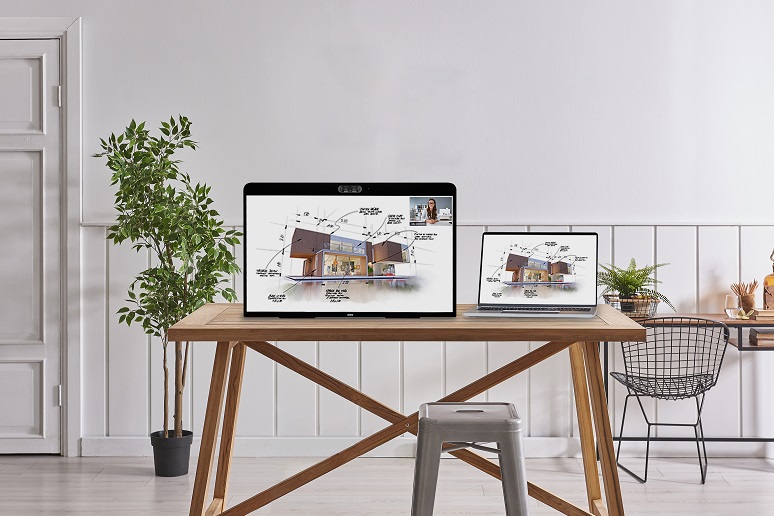One consequence of COVID-19 has been the emergence of the home office as the default workspace, where workers communicate and collaborate. While many workers made the switch with ease, others haven’t been equipped to handle a prolonged period of working from home. Zoom has become the latest provider hoping to fix that with new solutions geared at improving the home office experience.
Zoom today announced Zoom for Home, an all-in-one, standalone collaboration device for WFH users, Jeff Smith, head of Zoom Rooms, told No Jitter in a briefing. When a user signs into a Zoom for Home device using their Zoom credentials, they have access to all their collaboration applications, including Zoom Meetings and Zoom Phone, Smith said. The device synchronizes to user calendars and contacts, comes with whiteboarding capabilities, and doesn’t require additional Zoom licenses, he added.
The first device that will be a part of the Zoom for Home program will be the DTEN ME, unveiled last month as a standalone WFH device at
InfoComm 2020 Connected. The DTEN ME features a 27-inch touch display, three built-in smart cameras, and an eight-microphone array, Zoom said. Other devices will be available through the Zoom for Home program at a later time, Smith said.
While these devices have historically been marketed and designed for executive WFH experiences, Smith thinks there is an opening in today's climate for more knowledge workers to use them. Instead of having IT send one device for calling, another for video meeting, etc., they can simply send one device that comes with all the features a user might need, Smith argued.
From an IT perspective, home offices have also posed some unique challenges, chief among them that home users are generally tech novices often left to troubleshoot issues on their own, Smith said. Many times, IT can’t “see into” a remote worker’s network, especially if they are using a personal device for work. Not only does Zoom for Home provide WFH users a dedicated device for communication and collaboration, but also one that IT can remotely manage from the Zoom portal, Smith said. Additionally, when workers finally return to the office, they can bring the device with them, Smith went on to say.
The DTEN ME will cost $600 and will be generally available in August from Zoom and won’t be a part of the hardware-as-a-service program the company introduced earlier this month, Smith said.
The ‘At Home’ Category Emerges
While Zoom is the recent entry into this “at home” category, they aren’t the only ones.
Crestron and Microsoft have each revealed WFH solutions, too. Last month,
Crestron unveiled HomeTime, a video/audioconferencing system that features native Zoom Rooms integration and can be remotely managed via the Crestron XiO Cloud service.
Microsoft last week announced that Lenovo ThinkSmart View and a Yealink device will be part of its Teams display line of all-in-one dedicated devices.
And these are just a view examples of how vendors have responded to
the needs of WFH workers. As many enterprises rely more heavily on WFH or hybrid (in-office/WFH) environments during COVID-19, solutions like these and others are one way IT can enable communication and collaboration wherever users work.











